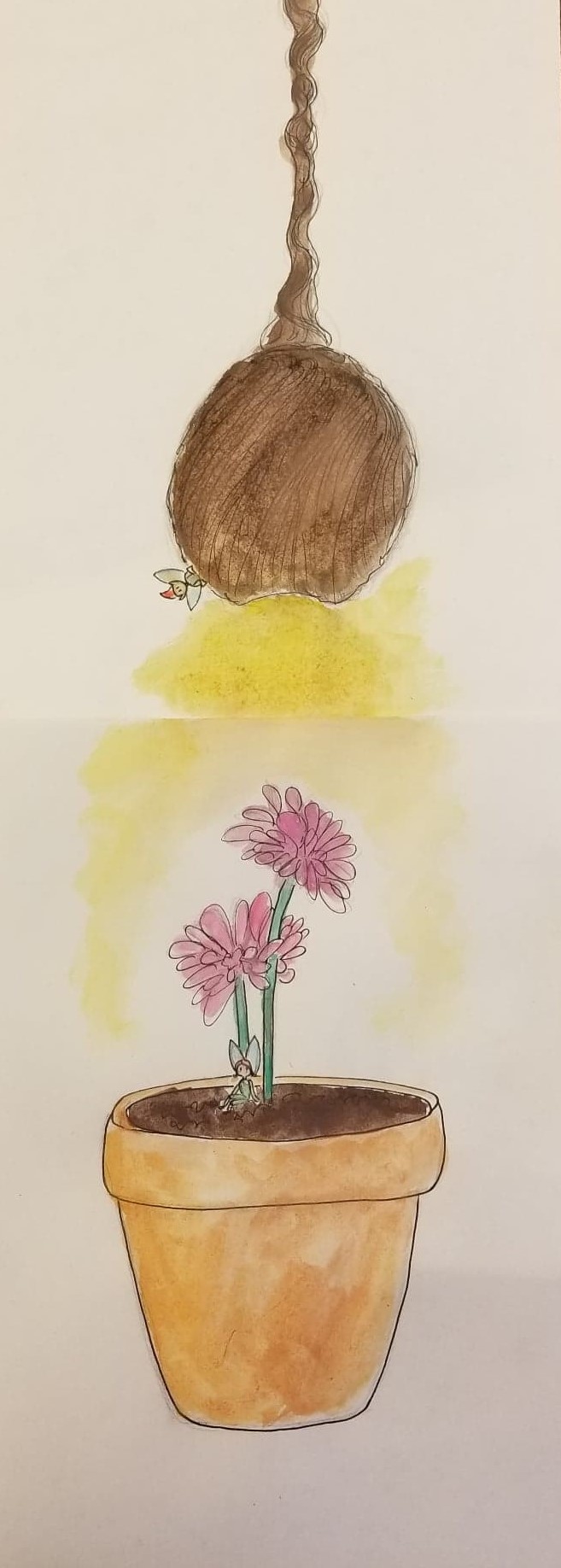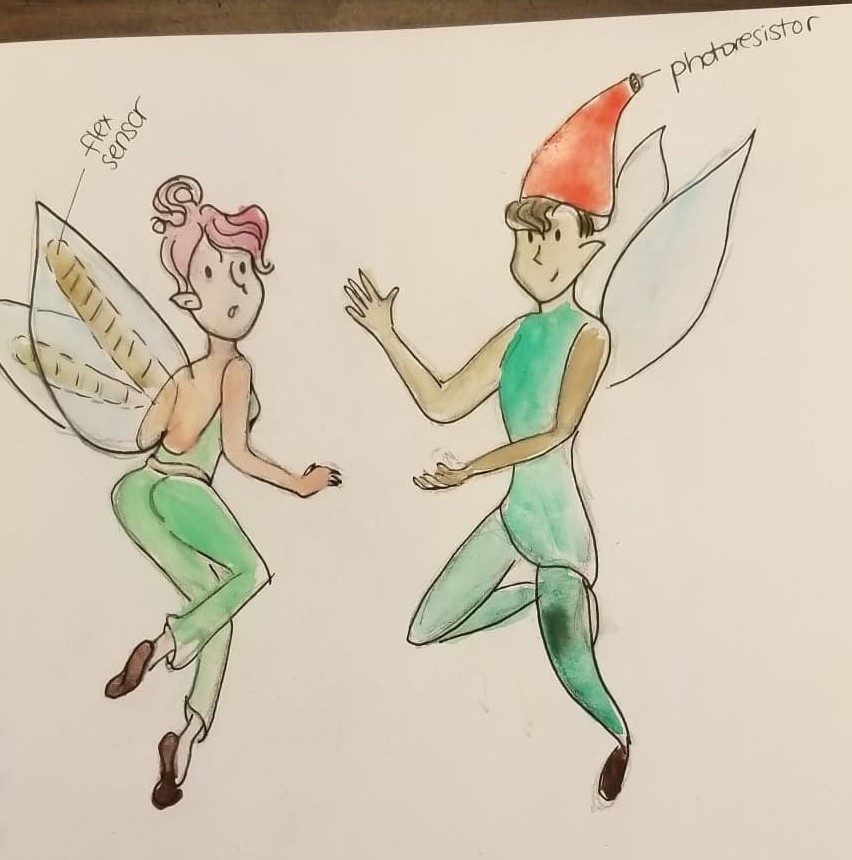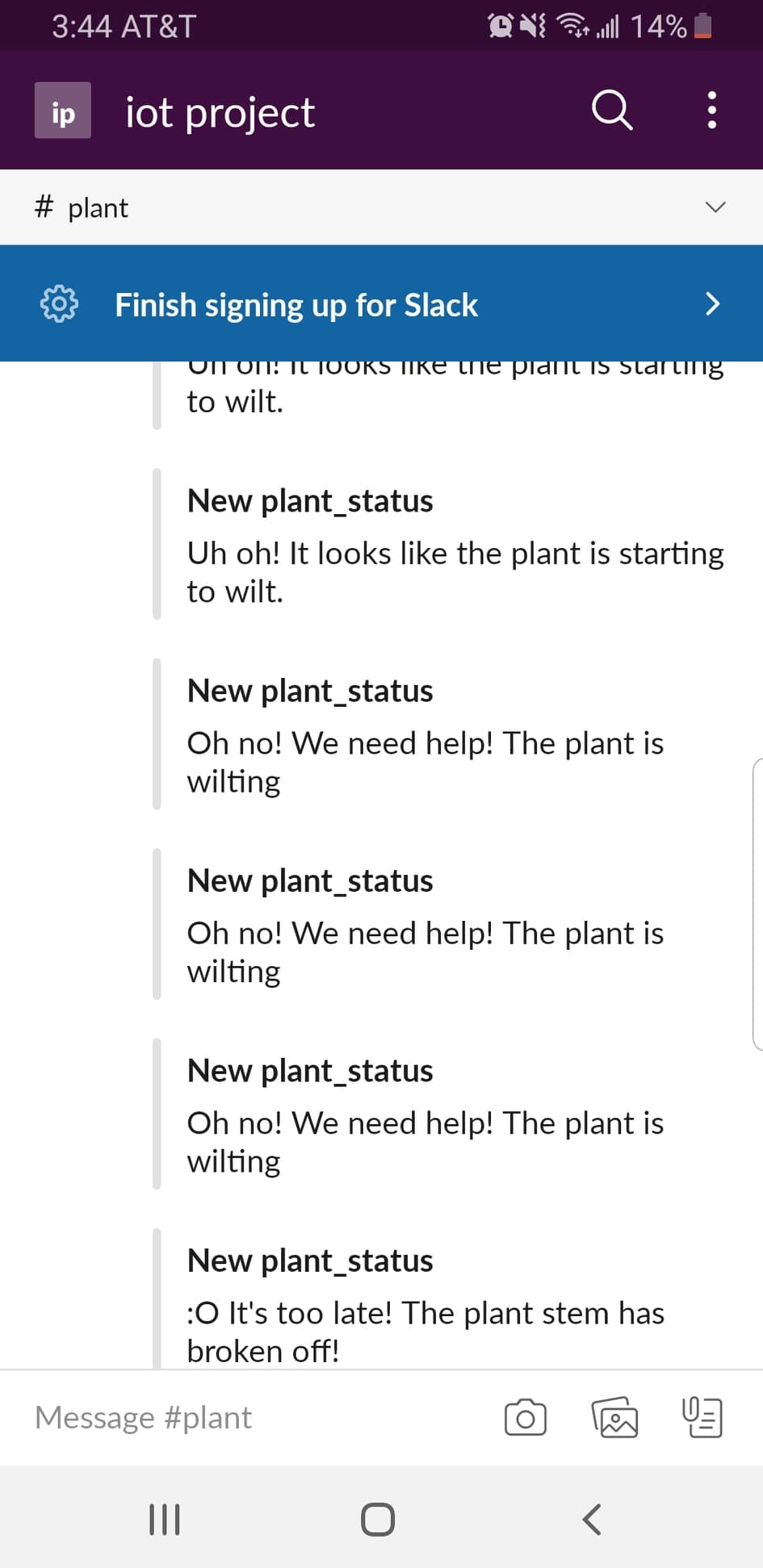Solution
These little garden fairies live by your flowers and help make sure they are standing upright and receiving all the light they need.
The fairies wake up at 7am and start caring for your flower until 6 pm, which is when they head to bed. During the day, the fairies will monitor how upright your flower is using a flex sensor. If your flower starts to wilt, the fairies will then send you a warning via Slack. As the flower continues to wilt, the messages will start to sound more urgent, meaning you should really check on your flower to check on it or water it.
During the day, the fairies also monitor how much light your flowers are receiving with a photoresistor. When it gets too dark, the fairies will play a short fairy tune and shine a magical (LED) light on your flowers to give them all the brightness they need throughout the day. If the surroundings get bright again, the fairies will turn off their magical light.
At 6pm, the fairies will retire to bed and will stop sending you any alerts about how upright your flower is or how much light it’s receiving. That is until 7 am, when the new day begins…


